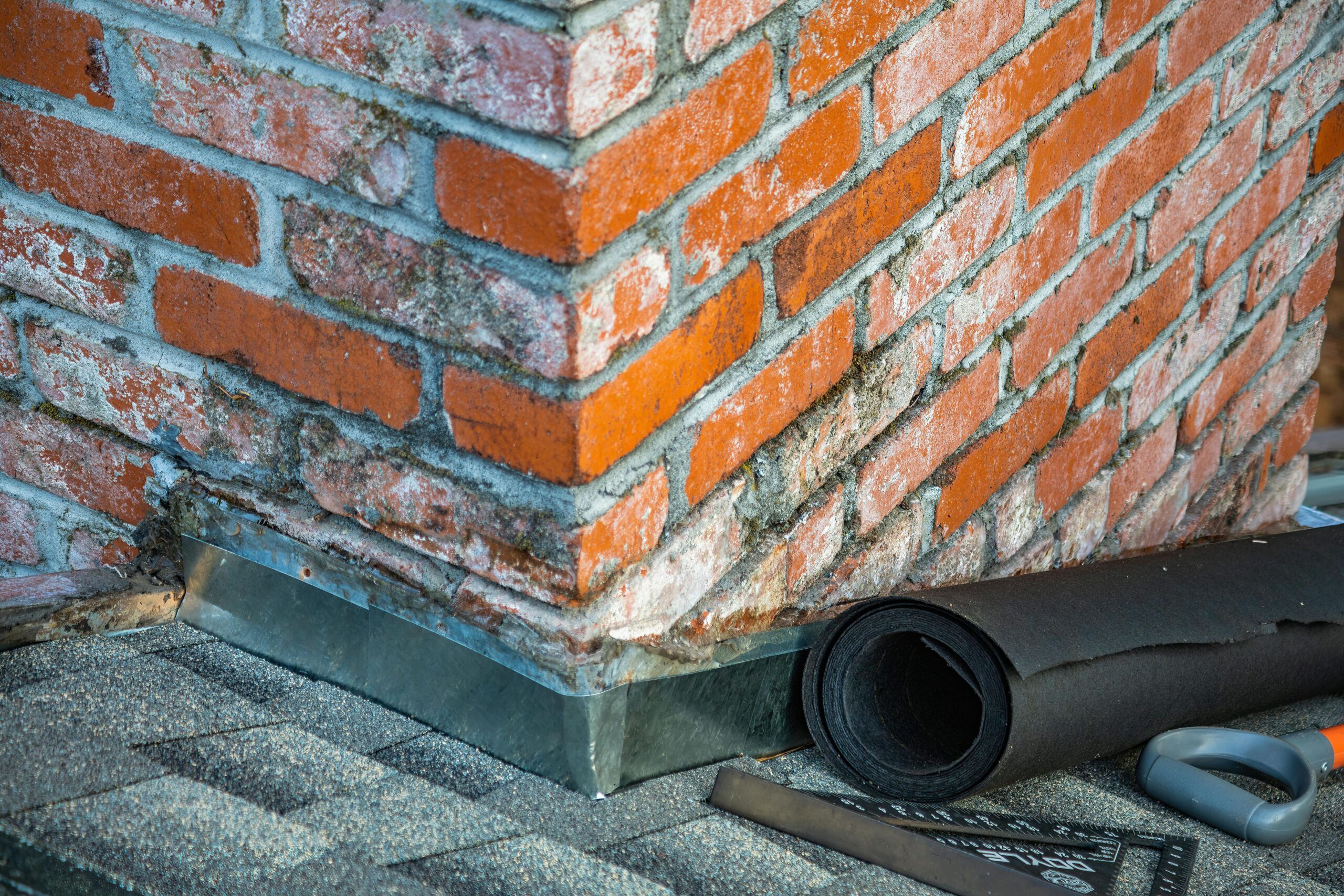Your chimney represents a vulnerable penetration point in your roof system, creating a critical junction where water infiltration can occur if not properly protected. Chimney flashing—the metal material installed around the base of your chimney where it meets the roof—serves as the primary defense against moisture intrusion. When properly installed and maintained, this seemingly simple component prevents costly water damage to your home’s structure. This article explores the crucial role of chimney flashing, common problems that arise, different flashing types, and maintenance practices that protect your roof’s integrity for years to come.
Understanding Chimney Flashing and Its Function
Chimney flashing creates a watertight seal at the intersection where your chimney penetrates the roof surface. This critical barrier prevents water from seeping into the gap between these two different materials and structures. Without proper flashing, rainwater would easily find its way into your attic, walls, and ceiling, causing significant damage over time. The flashing system typically consists of multiple components working together, including base flashing that lies flat against the roof, counter flashing that’s embedded into the chimney’s masonry, and sometimes step flashing for sloped roof sections. Each piece plays a vital role in preventing leaks around the chimney by redirecting water away from vulnerable seams.
When designed and installed correctly, chimney flashing accommodates the natural movement that occurs between the roof and chimney structures due to temperature changes and settling. This flexibility is essential since your chimney and roof expand, contract, and potentially shift at different rates. Quality flashing systems maintain their integrity despite these ongoing stresses, providing continuous protection for your home’s interior.
Common Chimney Flashing Problems and Their Causes
Many roof leaks can be traced back to failing chimney flashing. The most frequent issues include rust and corrosion, especially with older galvanized steel flashing that has exhausted its protective coating. When rust takes hold, it progressively deteriorates the metal until holes develop, allowing water to penetrate. Another common problem is loose or separated flashing, which can result from poor installation, house settling, or the natural expansion and contraction cycles mentioned earlier.
Damaged mortar joints in the chimney itself pose additional risks to flashing integrity. When mortar deteriorates, counter flashing can become loose, compromising the watertight seal. In regions with severe weather conditions, high winds may lift or damage flashing components, while heavy snow and ice can create additional stress on these crucial junctions. Age is another significant factor, as most flashing materials have a limited lifespan, typically ranging from 15 to 30 years depending on material quality and environmental conditions.
Types of Chimney Flashing and Material Considerations
When exploring options for chimney flashing leak repair or installation, material selection significantly impacts durability and performance. Galvanized steel represents the most economical option but typically lasts only 15-20 years before rust becomes problematic. Aluminum offers better corrosion resistance but may not withstand severe weather as effectively as stronger metals. For premium protection, copper and stainless steel flashing provide exceptional longevity—often 50+ years—though at higher initial cost.
Beyond material selection, different flashing styles serve specific purposes in chimney maintenance for roof protection. Step flashing consists of L-shaped pieces installed along the chimney sides where it meets sloped roofing. Continuous flashing (sometimes called apron flashing) protects the bottom edge with a single piece, while cricket or saddle flashing diverts water around the chimney’s upper side. This specialized triangular structure is particularly important for preventing leaks around chimneys on steeply pitched roofs. For comprehensive protection, a complete system incorporating all appropriate types provides optimal defense against water infiltration.
Inspection and Maintenance Best Practices
Regular roof flashing inspection represents one of the most cost-effective ways to prevent expensive water damage. Homeowners should examine chimney flashing at least twice yearly—ideally in spring and fall—and after major storms. During these inspections, look for obvious signs of damage: rust spots, loose or missing sections, and deteriorated sealant. Check interior spaces below the chimney for water stains or dampness, which often indicate flashing failure even when external damage isn’t immediately visible.
For thorough assessment, consider scheduling professional roof inspections annually. Experienced roofers can identify subtle problems before they escalate into major leaks. They’ll examine not just the flashing itself but also the surrounding shingles and chimney masonry. When minor issues are discovered, prompt chimney flashing leak repair can prevent water from compromising your home’s structural elements. For professional assistance with inspection or repairs, you can find qualified local contractors through platforms like AskHomey who specialize in chimney and roofing work.
When to Repair or Replace Chimney Flashing
Minor flashing issues can sometimes be addressed with targeted repairs. Small holes or limited rust spots might be effectively treated with appropriate flashing sealant or metal patching. However, extensive corrosion, multiple leaks, or flashing that has pulled away from the chimney generally indicates the need for complete replacement. Similarly, if your home has experienced recurring leaks despite repair attempts, this suggests fundamental flashing failure requiring comprehensive intervention.
When planning chimney flashing replacement, consider upgrading to more durable materials that offer extended protection. The modest cost difference between standard and premium flashing options often represents excellent value when factoring in the extended service life and reduced maintenance requirements. Professional installation ensures proper integration with both your roofing system and chimney structure, creating the watertight seal necessary for long-term protection. By taking proactive measures to maintain your chimney flashing, you’re effectively safeguarding your entire roof system and the structural integrity of your home for years to come.
For more tips and to connect with reliable home service professionals, follow AskHomey on Facebook and Instagram.



